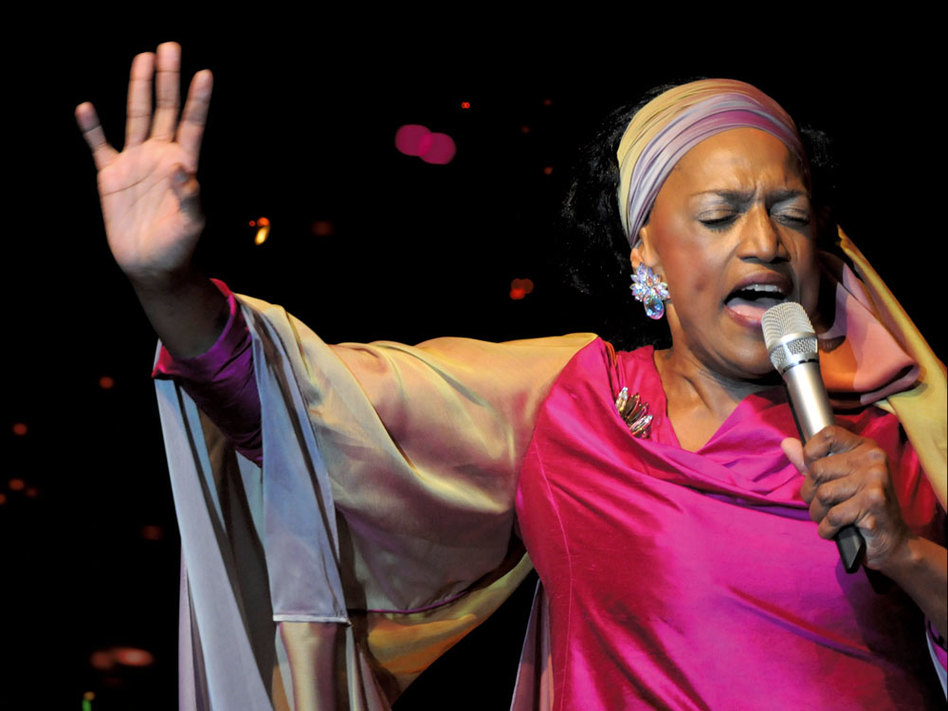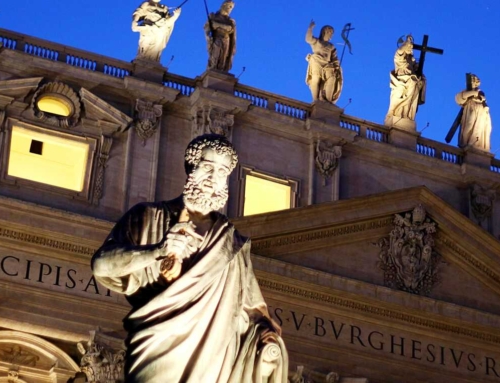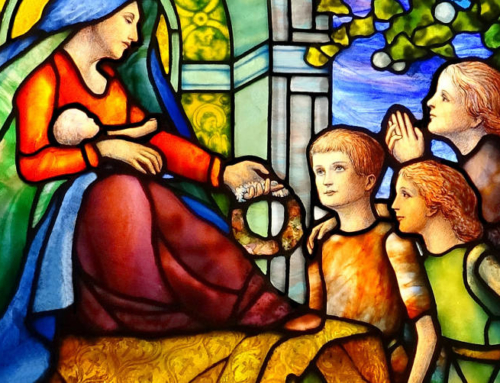The unique American musical tradition of Negro spirituals is nowhere better exemplified than in this heartfelt meditation on Christ’s Crucifixion, Were You There When They Crucified My Lord, by Jessye Norman.
Ms. Norman died in 2009 at the age of 74 after a long and distinguished career as an operatic soprano with four Grammy Awards and too many other accomplishments to list here. It’s not surprising that someone who grew up in the Deep South (Augusta, GA) and got her start singing gospel music in a Baptist church would be the preeminent vocalist of American spirituals.
Her interpretation of Were You There has the feel of someone who was actually present at Calvary and who later expressed her vivid memories of the event in song.
Norman’s resonant voice and pathos draw the listener right into the scene. Her clarity, dramatic pauses, and rich soprano tone gives you the sense that you “were there”, with her at the site, re-living the experience. In her performance, featured in the video below, she even hums a verse of the beloved song, during which you hang on her every breath.
Would that we all might have Jessye Norman’s depth of feeling for our Lord’s Passion!
The hymn
The Negro spirituals, as most Americans know, were borne of the suffering of the enslaved people in our own land generations ago, and for which, as Abraham Lincoln believed, we fought a terrible Civil War as payment for all the blood shed by that injustice.
The lyrics below share the four most familiar verses of the traditional song, which has a number of alternative verses describing the Crucifixion in eloquent imagery.
Each verse focuses on one aspect of Christ’s death on Calvary:
- The Crucifixion itself;
- The nailing to the Cross;
- The piercing of His side with the lance;
- The blotting out of the sun when He died; and
- The entombment of His lifeless Body.
The lament and the hope
The hymn is deeply evocative with its extended lament, “Oh….” in the middle of each verse followed by the three expressive trembles, each vowel and consonant of which shimmer through the crystal clear pronunciation of a consummate artist like Jessye Norman.
The final verse transcends Good Friday and Holy Saturday, reaching right to the ultimate expression of our Christian hope – Easter Sunday. God raised His Son from the dead!
A creative presentation like this augments our love of the Crucified Savior and complements the terse accounts we have of the event in the four Gospels.
And that is the secret of all good art: it takes the facts and deepens their meaning for us.
Perhaps Jessye Norman’s rendition of the familiar tune – although only two verses – will remain fixed in our hearts through our last weeks of Lent and into Holy Week where we hope to experience the event of the Crucifixion as a personal encounter with our saving Lord.
The lyrics
-
- Were you there when they crucified my Lord?
Were you there when they crucified my Lord?
Oh, sometimes it causes me to tremble, tremble, tremble.
Were you there when they crucified my Lord? - Were you there when they nailed him to the tree?
Were you there when they nailed him to the tree?
Oh, sometimes it causes me to tremble, tremble, tremble.
Were you there when they nailed him to the tree? - Were you there when they laid him in the tomb?
Were you there when they laid him in the tomb?
Oh, sometimes it causes me to tremble, tremble, tremble.
Were you there when they laid him in the tomb? - Were you there when God raised him from the tomb?
Were you there when God raised him from the tomb?
Oh, sometimes it causes me to tremble, tremble, tremble.
Were you there when God raised him from the tomb?
- Were you there when they crucified my Lord?
Other versions of the song include these additional stanzas:
Were you there when they pierced him in the side?
Were you there when the sun refused to shine?
The performance (duration, 4:49)
Soul Work
Human beings cannot exhaust the full meaning of the Crucifixion of Christ even in a lifetime of meditation, but that doesn’t mean we shouldn’t try.
The Church has given us varying accounts of the same event from four different angles, if you will, to emphasize the fact that we are dealing with a mystery, not just an incident that can be described more or less adequately in words.
Holy Week, particularly Palm (Passion) Sunday and Good Friday when we read the complete Passion narrative, emphasizes how important it is for us to pay full attention to the suffering of Christ and its meaning for us.
Take a page from the incredible spiritual hymn we have just discussed. Focus on one aspect of the Crucifixion at a time and contemplate His suffering.
You can widen your scope to see the larger scene (the Way of the Cross, Our Lady’s sympathetic suffering, the dialogue with the Good Thief, etc.) because this mystery is multi-faceted and infinite in its ability to explain human reality.
Then, offer your own sufferings in union with His. There the mystery unfolds, and you will begin to understand the true meaning of the Sacrifice.
———-
Lyrics source: Hymnary.com




Leave A Comment